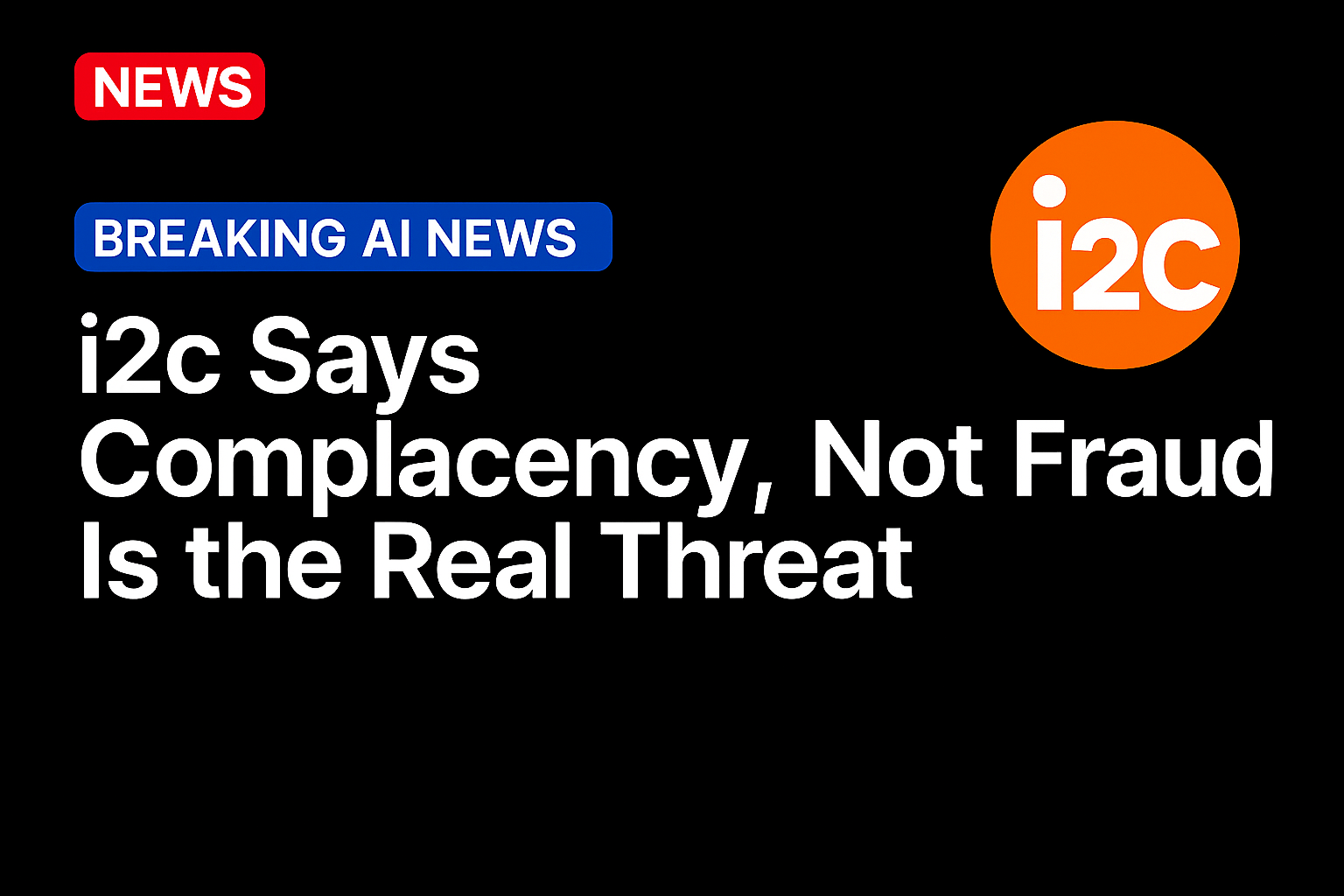The fraud landscape in payments is evolving faster than many financial institutions can adapt.
For Matthew Pearce, vice president of Fraud Risk Management and Dispute Operations at i2c, artificial intelligence is the most valuable — and volatile — tool in that fight.
As AI reshapes decisioning, regulators are scrutinizing how it’s used, and the pace of change could deliver an “October surprise” few banks see coming.
“One of the biggest shifts this year is the accelerated enforcement of AI-driven credit decisioning regulations,” Pearce said, as part of the “What’s Next in Payments” series examining the surprises that may lurk in the final months of the year. “Regulators around the world are really focusing on transparency and fairness and how AI is applied to credit scoring and fraud detection.”
He pointed to the European Union’s AI Act targeting high-risk systems, and emerging U.S. frameworks “to increase accountability.” Together, he said, these developments mean institutions “need to take a hard look at their AI governance, making sure that the models that they have are explainable, that they’re ethical, non-discriminatory as well.” It’s reshaping how risk is managed across the digital-payments ecosystem.
Regulators and Readiness
That scrutiny is pushing financial institutions to re-examine what they do — and how ready they are. “In essence, people need to start taking a look at where that next step needs to be, where regulators are going to be coming in and kind of lifting the hood to see what’s going on,” he said.
The “expected part,” Pearce said, is regulatory enforcement. The “wild cards” are the pace and scale of artificial intelligence itself. “Generative AI or new approaches to risk modeling could change how credit decisioning and fraud detection happen, really almost overnight,” he told PYMNTS, saying about 74% of financial institutions are already using AI for financial crime detection, and nearly the same percentage using it for fraud detection. That’s evidence of how critical real-time monitoring has become. “Any platform that can’t respond dynamically to these risks,” he warned, “is going to really fall behind.”
From Compliance to Capability
For i2c, the challenge is turning that urgency into practical tools. “At i2c, it’s about enabling institutions to adapt quickly,” Pearce said. “AI models must be explainable and fair, and i2c’s platform allows flexible modeling and real-time risk monitoring so issuers can adjust credit rules while staying compliant.”
In merchant payments, he noted, fraud is growing right alongside digital volumes. i2c’s AI monitors transactions in real time across virtual, physical and B2B cards, helping significantly reduce losses, he said. Its API-based platform, he added, lets issuers “support new products like buy now, pay later (BNPL); virtual cards; and cross-border payments without overhauling the system.” Real-time visibility “simplifies reporting and compliance” so institutions can “navigate AI enforcement efficiently.”
The Global and Real-Time Dimension
Pearce said agility is non-negotiable as real-time payments expand. “Preparation really comes down to being able to be agile — having agility, scalability and being real-time; using real-time intelligence,” he said. Late-year shifts “can impact credit transactions and fraud risk, and institutions need to be able to respond instantly.”
He said i2c’s payment hub connects to multiple real-time networks, including Visa Direct, ACH and FedNow, as well as Mastercard Send, RTP and Zelle, enabling immediate approvals or flags. AI continuously monitors transactions, dynamically adjusting rules and limits based on emerging patterns. Real-time payment volume grew 38% in 2024 to 343 million transactions — a measure of how rapidly conditions have changed. With compliance demands rising, he said, i2c systems “maintain visibility and audit readiness, allowing rapid adaptation to the new AI rules without operational disruption.”
Future-Proofing the Financial Institution
Initiatives such as virtual cards and BNPL can be stood up quickly — but only if risk management keeps pace. “Digital payments are coming … digital-first, real-time payments and increasingly personalized,” Pearce said. “Fraud is much more sophisticated now, consumer expectations are higher, and the regulations are tightening. It’s a perfect storm.”
The Human in the Loop
Even as AI grows more powerful, Pearce urged banks not to take their hands off the wheel. “My biggest piece of advice around the AI modeling is not to set it and forget it,” he said. “You still have to ensure that what you are building has somebody looking over the top of it to ensure that it’s running correctly.”
Using a football analogy, he said letting AI call plays without oversight could lead to “a play called where on first and 10 your quarterback takes a knee because the defense wouldn’t expect that.” The point, he said, is that “the human in the loop really needs to be there … to [ensure AI works effectively].”
Source: https://www.pymnts.com/




